Emil Zenko: "It's satisfying to learn that someone bought your vinyl without having a record player"
- 07.05.2024
- 2847
Emil Zenko is a multidisciplinary artist with hundreds of thousands of streams on Spotify and 10K+ followers on Instagram. We met with Emil to discuss his latest album "VHS", the project "Greenhouse", which "moved" from a glass greenhouse on a Belarusian farm to a gallery in Bialystok, and a book about the kitchen of art projects. We also spoke about how a tripod made of cardboard and Paris outside the window help (or not?) to crowdfund vinyl and what meanings are hidden in Emil’s sheep paintings.
Intro
– Four years ago, we did an interview with Kinoproby, where you briefly talked about your work. To remind our readers—you are an artist and composer from Grodno, who moved to Paris, and lived between Belarus, Berlin and France. Tell us about your movements in recent years.
– Since 2012 I've been leading an immigrant lifestyle, accumulating multiple countries “under my belt”. It seems I've completed a tour of Europe: in 2018, I spent time with Kinoproby in Paris; then I lived in Berlin for a year. Between Berlin and Paris, I resided in Stockholm, while frequently traveling to Poland. Covid forced me back to Belarus — to a village near Hrodna, where I could hide away and create. After that, it was back to the European tour. I've been living in Paris for the past year, and although I'm constantly on the move, Paris has finally become my base. Right now, I feel like this is my home.
What Happens in the Greenhouse
– How did you start making short videos?
– I started shooting "Pool" when I lived in Berlin in 2019. The videos gained traction very quickly, and I realized that the short video format worked much better than full-length music videos.
The fate of the greenhouse as an object is interesting. It used to belong to my mom's friend, who emigrated to the USA. The greenhouse has experienced several relocations; the last one was in 2016 when my father, uncle, and I moved it from a neighboring village to our yard. After Berlin, in the summer of 2019, I returned to Belarusian countryside. I entered the greenhouse — it was abandoned, overgrown with weeds, a true jungle. It was surreal—I had to do something about it. One summer evening, three friends and I came, set up a camera, and started recording: I shaved myself, sang a cover of "Mr. Sandman," and chopped my head off.
That's how it all started. There was no content plan or calendar. At some point, the project grew, but nobody understood where the greenhouse was and where I was. Many people were convinced that I was still making videos with the greenhouse in Germany. Models and actors reached out to me, wanting to participate in the project. I invited everyone who could come to Belarus. At some point, the rural house turned into a semi-squat. It was an art residency, a retreat, a shelter, and parties were held there. The atmosphere and freedom fueled me; I was constantly filming, writing music, working remotely, and doing a lot of physical work around the farm. It was the perfect balance and a lot of energy.
There's a video in the aquarium . The story is that that winter in Belarus, there wasn't much snow. As soon as it snowed, I immediately grabbed an empty aquarium, called a friend to help with filming, loaded it into the car, and went to the countryside. The water in the aquarium was from the well and ice cold; I heated two or three pots to make it a bit warmer. As a result, I strained a tendon, and for a whole week, I was getting injections. You see, in the video, a hand sticks out of the water. At that moment, it was freezing to death. Luckily, I shoot everything quickly. It's important for me not to spend a lot of time on shooting. I plan a lot of technical aspects beforehand: I envision the composition, the idea, what I'll do afterward with the graphics. I carry everything in my head, so the shootings last five minutes. It's also important for me to edit the video within a day so that the graphics and all the editing and surrealism stories don't take up too much time. Because if you get carried away with the process, you won't finish it.
"At some point, the rural house turned into a semi-squat. It was an art residency, a retreat, a shelter, and parties were held there"
At some point, it became difficult to work with nudity on Instagram, and the idea arose to make a video on this topic. The funniest part is that a video about censorship fell victim to censorship itself: it was immediately deleted, although everyone shared it right away. Several times throughout the day, I re-uploaded it, adding blur and pixels on the chest. As a result, on the fourth or fifth attempt, Instagram was satisfied with the number of pixels per millimeter of a nipple.
"The most amusing part is that the video about censorship fell victim to censorship itself: it was immediately removed"
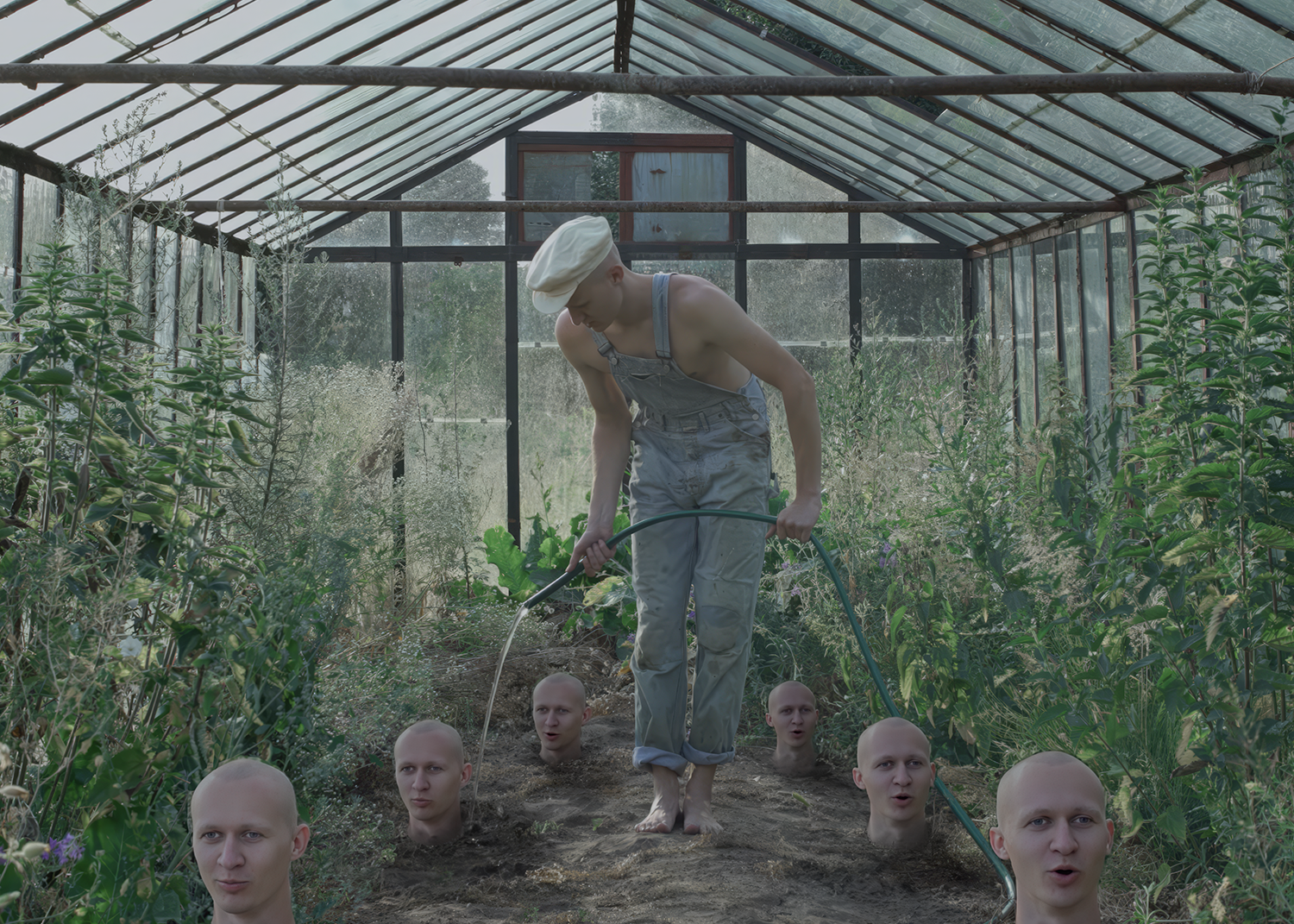
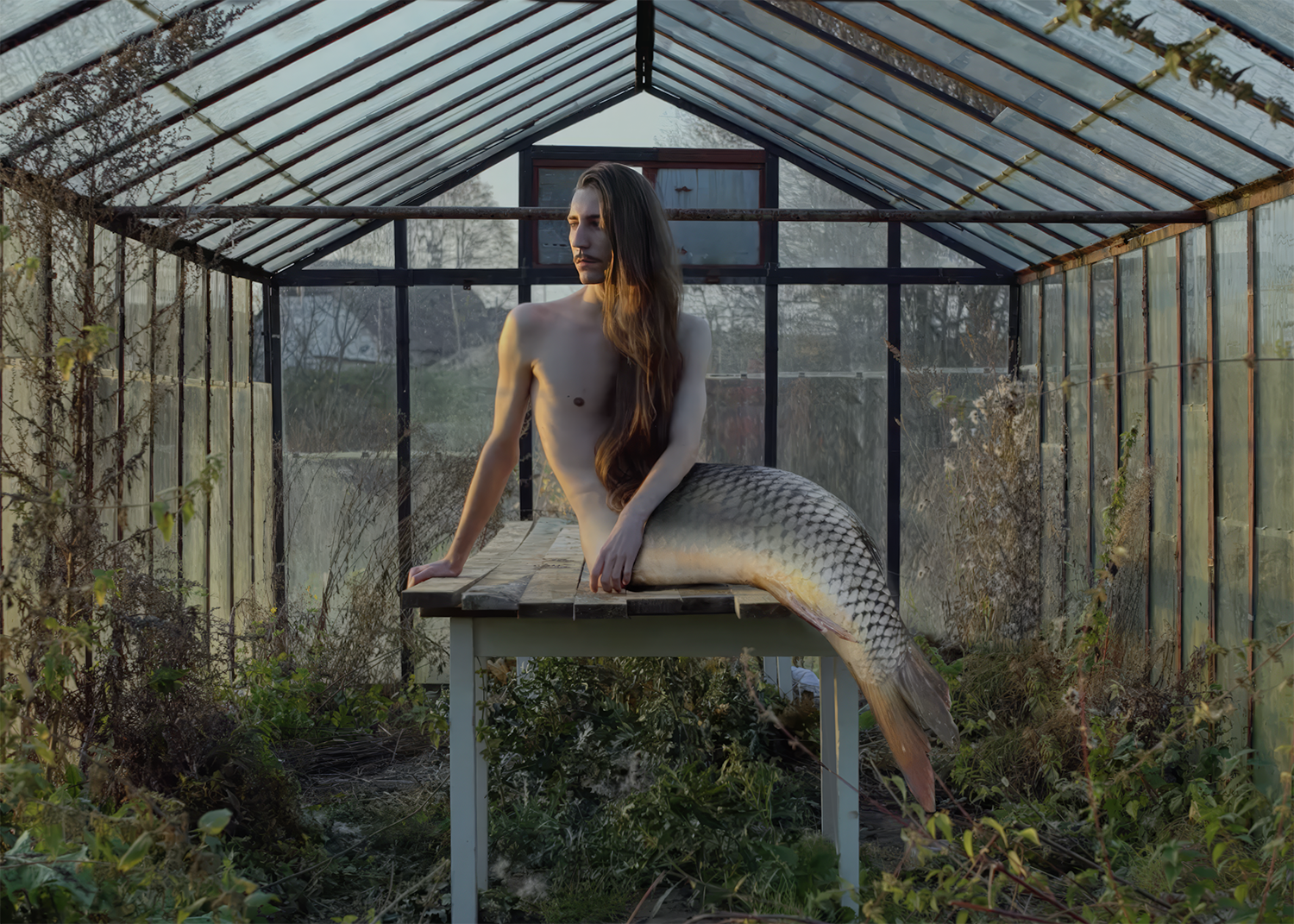
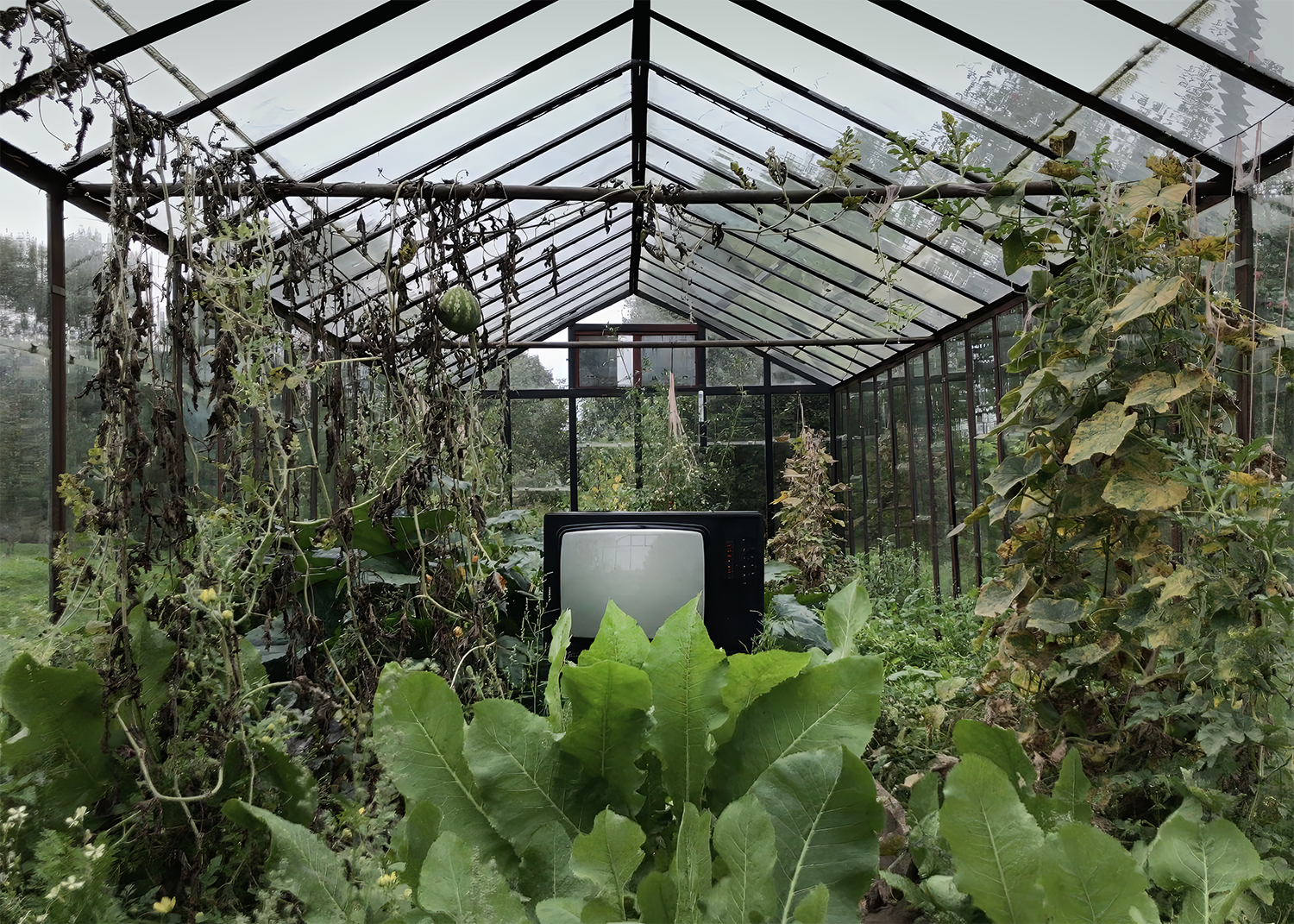
– Why did you choose the Slendzinski Gallery for the exhibition of the Greenhouse in Białystok?
– Two years ago, the curator Vola Anisko and I began searching for a gallery. Initially, we approached galleries that interested us visually, in terms of size, appearance, and their collaborations. Then we faced the reality, and some galleries fell through for various reasons.
I exhibited in Slendzinski Gallery six years ago with a different project, alongside the graphic artist Ivan Rusachak from Hrodna. When there's mutual interest, everything is resolved very quickly. Big thanks to David, the Director, who helped six years ago and now.
– Can you tell us about the cost of the project?
– Only the gallery's accounting department knows the exact answer. But the gallery has an excellent team that quickly gathered everything that came to our minds and was described in the concept—the exhibition turned out even better than we expected. It will continue until May 19th, and on the 18th, there will be the Night of Museums. We're preparing a music performance. I'll fly in from Paris, you're all invited. The "GREENHOUSE" exhibition will also be shown in Paris in June, but in a different form and with a different curator. And we're preparing a book.
– About the backstage?
– Yes, it's the idea of my Parisian curator and agent Elina Polyakova. A book is essential for a contemporary artist. As a rule, these are albums, presentations of photographs, paintings, but I didn't want the book to be in such a conventional catalog format. I was often asked what happens behind the scenes, how everything is done technically, how the video process is set up. So the idea arose not to make a banal album but a "Backstage." To show a little what's behind the scenes. Often, it's even more interesting than the result.
The book is printed and released on the principle of crowdfunding. It's not cheap by Eastern European standards, but its cost is entirely acceptable by Western European and American standards. It's about 150-200 pages in volume, quite a heavy story. In short, it's an album overview of the last ten years. When I delved into the archives, I found many things I wanted to share: projects related to music and video, painting and exhibitions that went unnoticed. This is an important stage in my creativity, which led me to the video format and subsequent works.


How (not) to raise funds for a vinyl
– How did the vinyl version of the "VHS" album come about?
– I initially wrote "VHS" with the understanding that it would be released on vinyl. I considered two options for a new vinyl release: gather material from existing popular tracks or write a new album. I chose the latter because I already had ideas for new material.
I tried to make the album more melodic. Each track has its own story. Sometimes I wrote about love and there should have been vocals, but the vocals disappeared along with that love. Sometimes I read a message dedicated to BFRND, with whom we didn't finish the track. Sometimes everything fell into place as it should. The vocals involved in the album's creation—Sasha Mk, Jazzmine Berger, and Lera Miller—are my friends.
"Sometimes I wrote about love and there should have been vocals, but the vocals disappeared along with that love"
– Tell us about raising funds for the album.
– This was my first experience with crowdfunding. To support this fundraising campaign, I started a series of short videos in Paris. Shooting videos at a busy intersection was quite a quest. I had a homemade cardboard tripod. None of the regular ones I had could be successfully mounted, so I had to make this "art object" out of cardboard, found, by the way, at the same intersection.
Each video led to raising funds for the vinyl. Simple, short, fun videos. Later on, I realized that there are some rules for fundraising that I didn't know and therefore didn't follow. Also, I wasn't too aggressive on social media, but during fundraising, everything should work a little more aggressively. It's better to raise funds together with specialists. It's worth noting that I didn't raise the entire amount needed for production, but I raised enough to cover the shortfall independently and finance the release of vinyl records. You can still buy them from me at performances or personally.
Collecting funds for vinyl production can be quite challenging because not everyone owns a record player. Some might have left theirs at home, while many frequently move and don't want to accumulate belongings, especially if they rent apartments. Interestingly, it's satisfying to learn that someone bought a vinyl from you without having a record player. It often happens that for many people, my vinyl becomes their first. It's often Belarusians and Ukrainians who have moved to Europe or the States. People live on suitcases, many have uncertainty in their lives, but they decided to buy a vinyl from me.
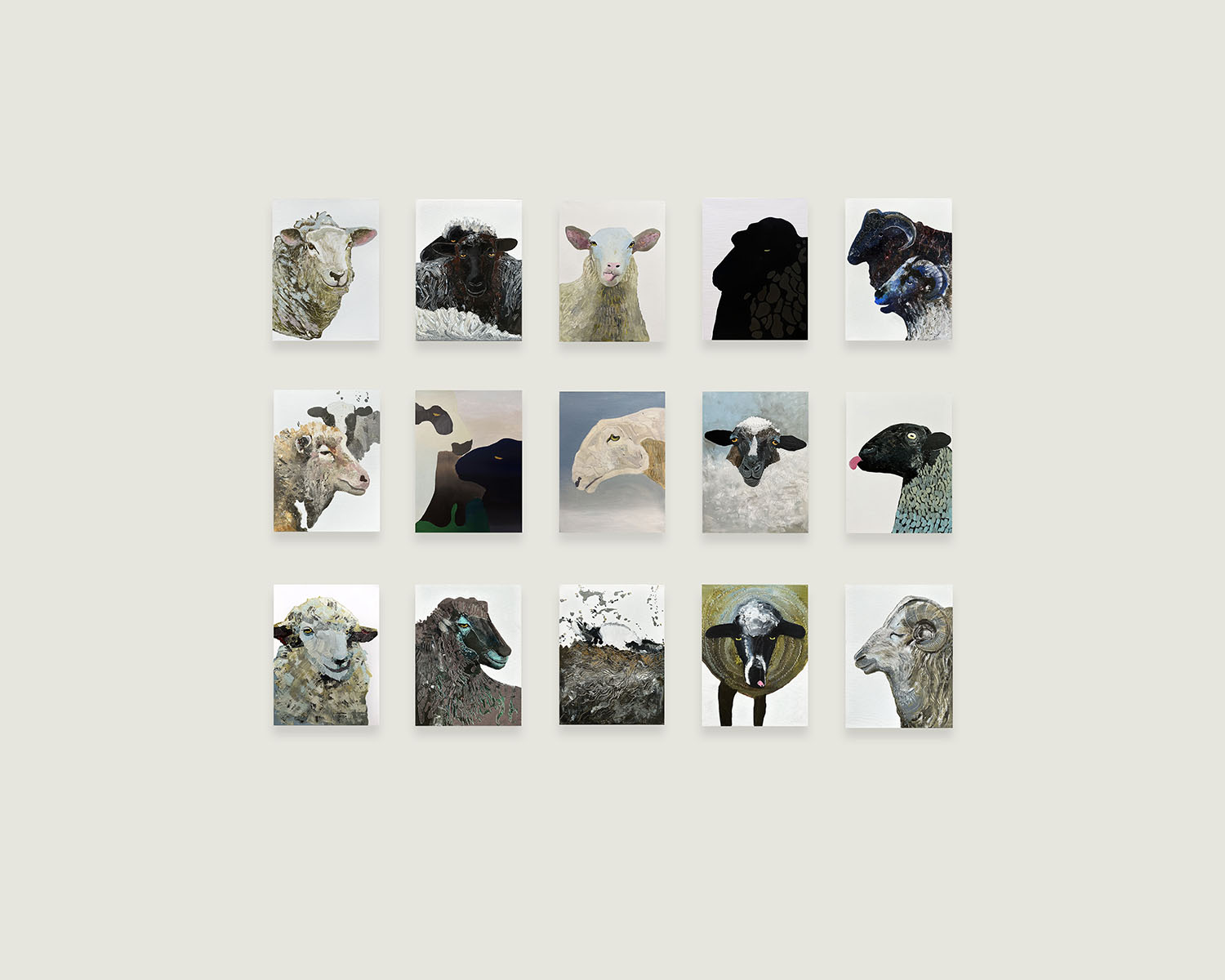
Why paint sheep
– Ты пры ўсім пры гэтым яшчэ і даволі класічны жывапіс валіш.
– If we go back to our previous conversation, there was a question about how I got into music. And I said that my musician father wanted me to study anything but music, so I went to study design in Hrodna.
There, young artists are taught an academic base. Over the years, I understand that they teach very well: against the background of other places and institutions, they provided a foundation that made it easier to progress further. But to this day, I don't understand why this is called design in the diploma. My father, also expecting a graduate in design, received portraits of elderly models, stacks of drawings, and a few plastic models from me. It smelled not of design but of old turpentine and canvas.
Well, and that's how I got into painting. I have a classical, post-Soviet education. It's difficult to appreciate and characterize this education, what it represents, but over the years, I know for sure that the experience was valuable; it significantly influenced me for the better.
Afterwards, I decided to apply to study in Germany, I chose Kunstakademie Düsseldorf, I even learned German for that. My cousin lives in Bonn, and she greatly influenced my life and worldview during those years. We frequently traveled around Europe to Paris, Amsterdam, and southern Germany. It influenced me at 17 years old quite rigorously and correctly, and I am grateful to my cousin for that.
I didn't get into Kunstakademie. I learned the language, passed everything, but failed the exams. I applied several more times—still didn't pass. I didn't understand how the admission system was different from ours. I didn't know that there were more than 700 applicants for each spot. I should have been going to all open days, behaving more aggressively, rather than quietly submitting documents and backing off. In any case, I'm glad I tried. The process of exploration, studying the institution's history, artists, groups, and directions influenced me greatly. That was enough to start looking for something else interesting in myself.





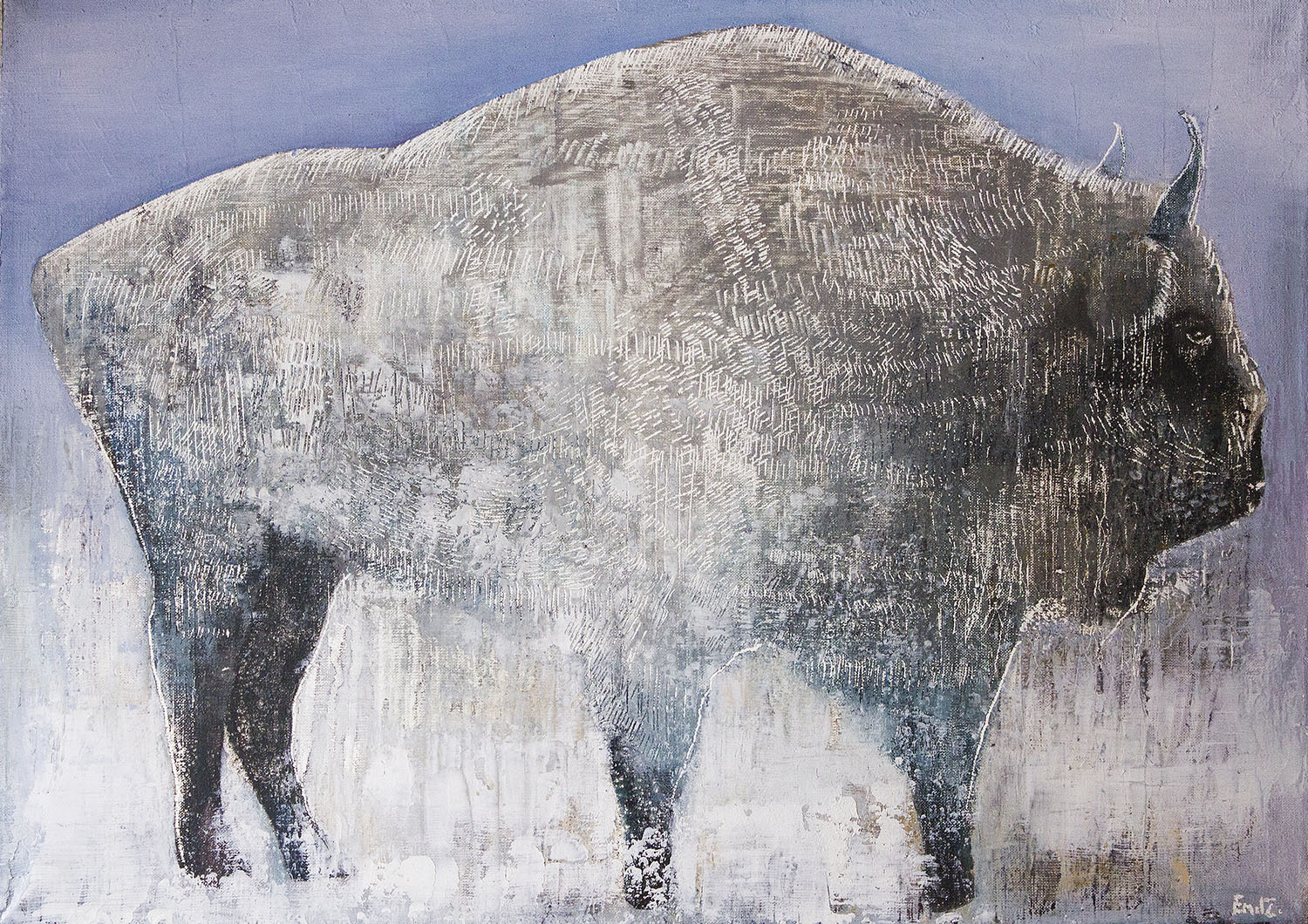
– Tell us about the series with sheep.
– Mostly, I was engaged in social animalism. You paint animals, but you mean entirely specific people, their social portrait and behavior models. I had not only sheep but also bison, chickens, and penguins.
"Structure" from 2014 is one of the first works that I could sign and say that it was serious. I was impressed by the wealth of sheep that my grandfather used to breed. They captivate with their simultaneous beauty and naivety, wealth and susceptibility. You understand that such wealth can easily be manipulated by a shepherd with a loyal dog. Everything's like with people.
"You paint animals, but you mean entirely specific people, their social portrait and behavior models"
I exhibited those sheep in Belarus and simultaneously put them up for sale on a German website. While they were on display, they were bought, and they immediately went to Germany, where later a couple more paintings with social themes followed. For a while, I lived off the proceeds from selling paintings, but consistently releasing them and not burning out was difficult. I switched to other things, rarely engaging in painting.
A year ago, I made another series of paintings, but exclusively with sheep. With an understanding that times have become even more interesting, and the theme of sheep and shepherds is even more poignant.